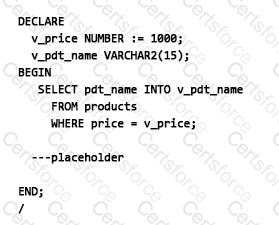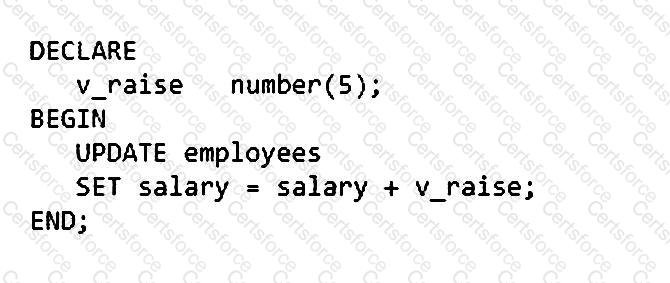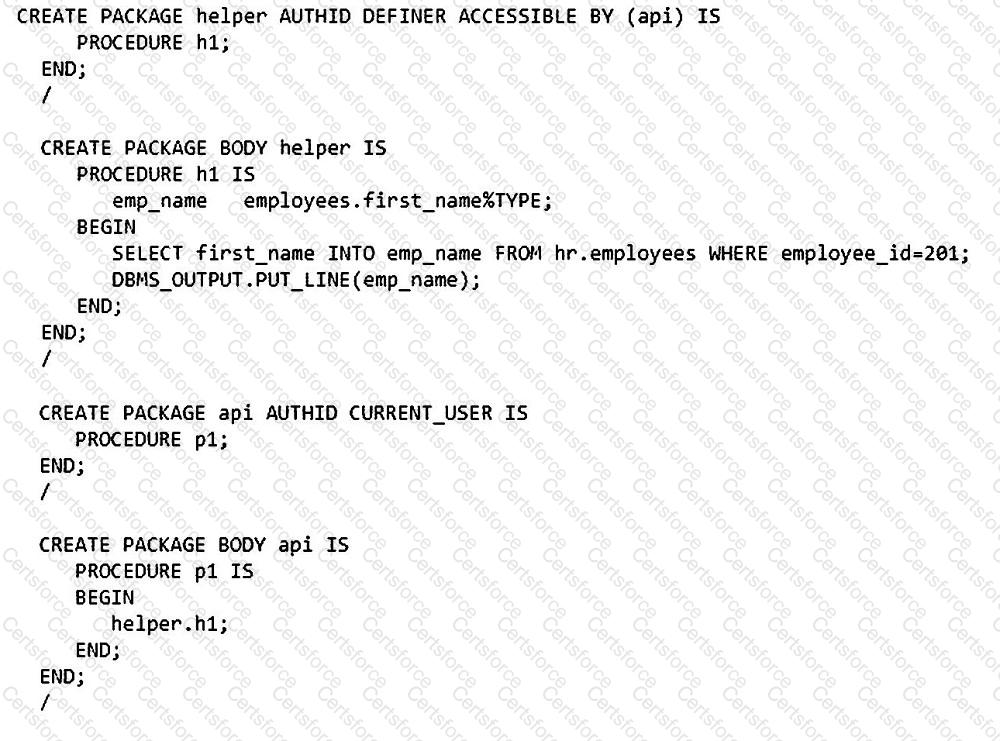Examine these statements which execute successfully:

Which anonymous block executes successfully?
In which type of trigger can :OLD and :NEW identifiers be used?
Examine this table in the SH schema:

User SH executes this code:

The program must terminate with a user-defined message and no rows displayed if more than one product's price is 1000.
With which option must “---placeholder” be replaced?
Which code will successfully create a BODILESS PACKAGE to standardize CONSTANTS and EXCEPTIONS declarations?
Which three are true about the procedure overloading feature? (Choose three.)
Examine this anonymous block of code:

Which two statements are true about the results of executing it? (Choose two.)
In one of your databases, table HR.EMPLOYEES includes the columns FIRST_NAME and EMPLOYEE_ID.
A row exists with EMPLOYEE_ID 201.
Examine these packages created by user HR:

EXECUTE privilege is granted to user SH, on the HR.API and HR.HELPER packages.
Which two will execute successfully? (Choose two.)
For which three SYSTEM EVENTS can triggers be created? (Choose three.)
Which two statements are true about using the OR REPLACE clause when creating named subprograms? (Choose two.)